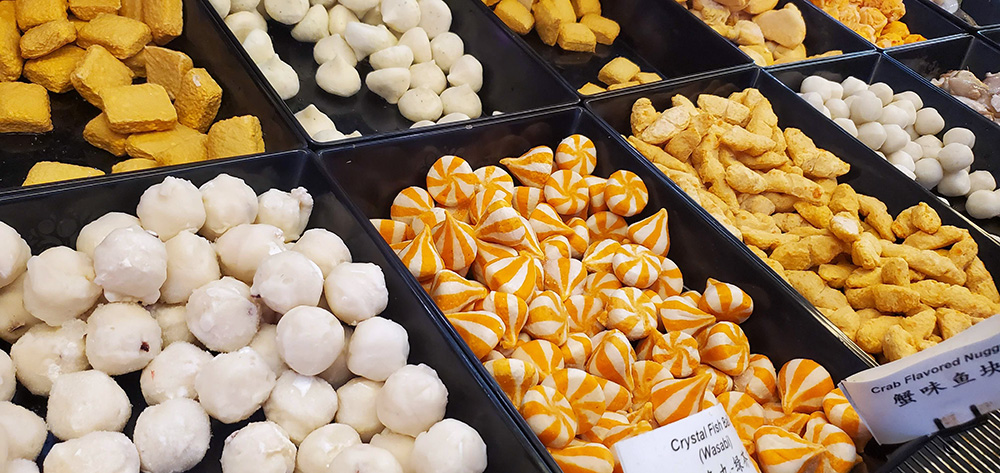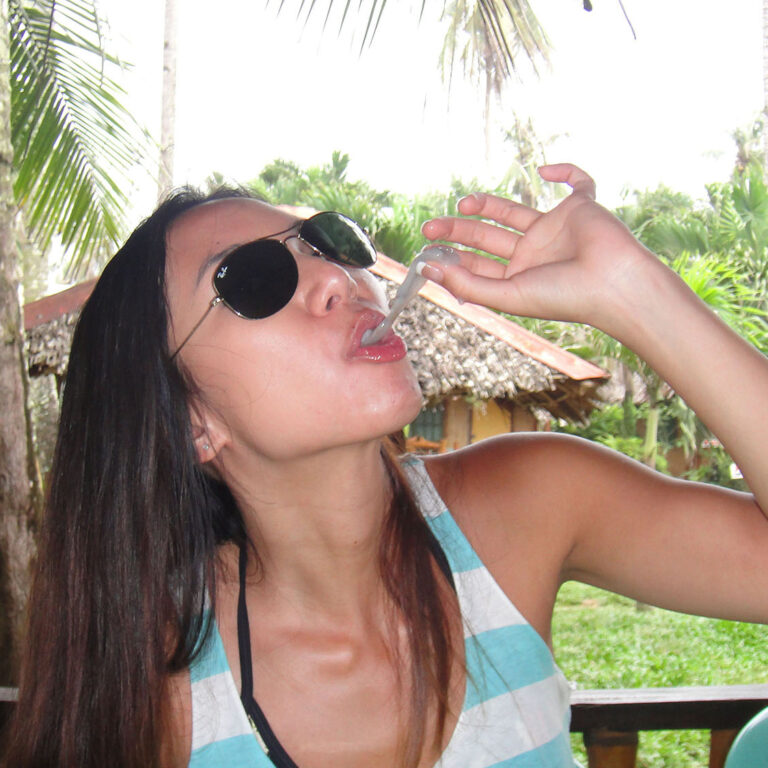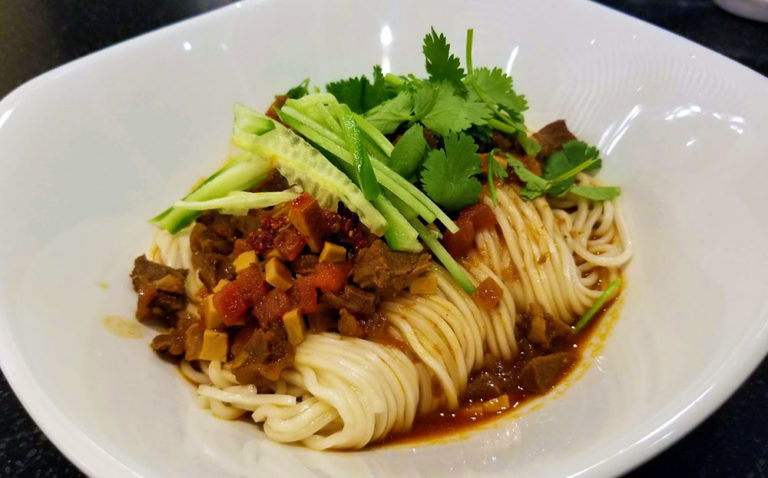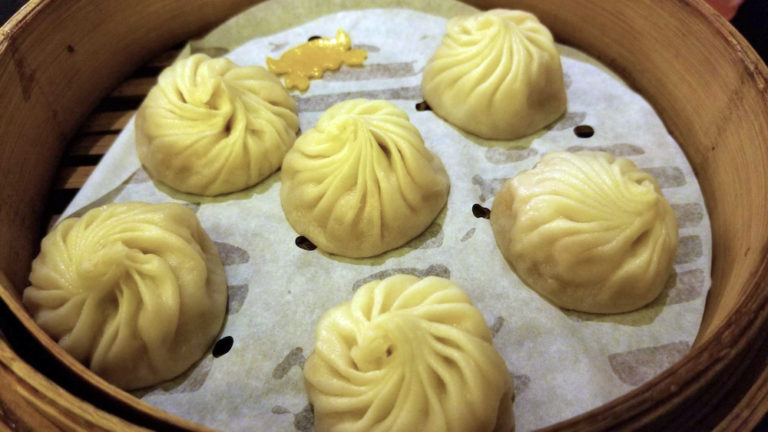
Malatang (a.k.a. ma la tang or mala tang) is a create-your-own Sichuan variation of traditional Chinese hot pot. It is commonly translated to “spicy numbing hot soup.”
This early form of hot pot originated at the Yangtze River in the Chinese province of Sichuan and became a popular food in the streets of China in the early 2010s. Since then, it quickly spread throughout Asia, Australia and major cities around the world.
The original street food format of malatang features an outdoor cart or a stall displaying an organized spread of hundreds of skewered ingredients. The spread often includes fresh vegetables, thinly-sliced beef or lamb, sausages, seafood, tofu noodles and other typical hot pot ingredients. Customers hand-select their desired ingredients, which are cooked by a worker in a large communal pot filled with broth. The cooked items are then placed in a bowl and topped with an assortment of condiments and spices like Sichuan pepper and chili pepper to give customers a mouth-numbing sensation.

The fast-casual restaurant concept of malatang is pretty similar to the street food version, but instead of organizing the ingredients with skewers, they are typically displayed in a self-serve “salad bar.” There also tends to be a larger selection of ingredients at these restaurants due to refrigeration and additional space. Diners choose their ingredients by placing them in a bowl which is weighed for pricing—not unlike self-serve froyo. Then, just like the street food version, the items are cooked in a communal pot before being topped with any requested condiments and served to the diners.
Other restaurants completely opt-out of the self-serve concept of malatang and simply serve dishes with established ingredient combinations according to their menus. Although diners miss out on the experience of picking their own individual ingredients, in the end, they can still enjoy the finished product—a savory “tongue numbing” soup. (Of course, most places allow for modifications, so if you tend to shy away from spicy foods, you can always request for a mild version.)
What is the difference between malatang and hot pot?
Malatang and hot pot are essentially the same type of food that follow different cooking processes. They both use the same types of ingredients (meats, vegetables, tofu, etc.) cooked in hot broth. However, while hot pot is ordered and cooked by diners at their own tables, malatang is made of ingredients hand-picked by the diner, then cooked by a worker in a communal pot. Hot pot is also generally viewed as a dine-in food, while the “build-your-own” version is frequently ordered for take-away as well as dine-in.
Many other countries also have their own version of hot pot like shabu-shabu and sukiyaki (Japan), Thai suki (Thailand), lẩu (Vietnam) and fondue (Switzerland).
Is there a difference between Chinese and Korean malatang?
Malatang became very popular in South Korea in the late 2010s. It had spread from China and initially maintained much of the Chinese aspects of the dish from the method of cooking to the ingredients. However, malatang in Korea eventually began incorporating flavors and ingredients common to Korea like bibimbap and bulgogi. Korean malatang is essentially Chinese malatang that has been modified to include Korean ingredients.
Where can I get malatang?
Many malatang eateries can be found throughout China, Korea and Australia like Tanghwa Kungfu Malatang, Lahuokungfu and David’s Master Pot. But, if you don’t have any plans to be in any of those countries soon, here are some restaurants in the states that might be more accessible to you (if you live on the western side of the world, of course).
And if all else fails, you can still get a taste of this spicy soup by simply ordering it online.











